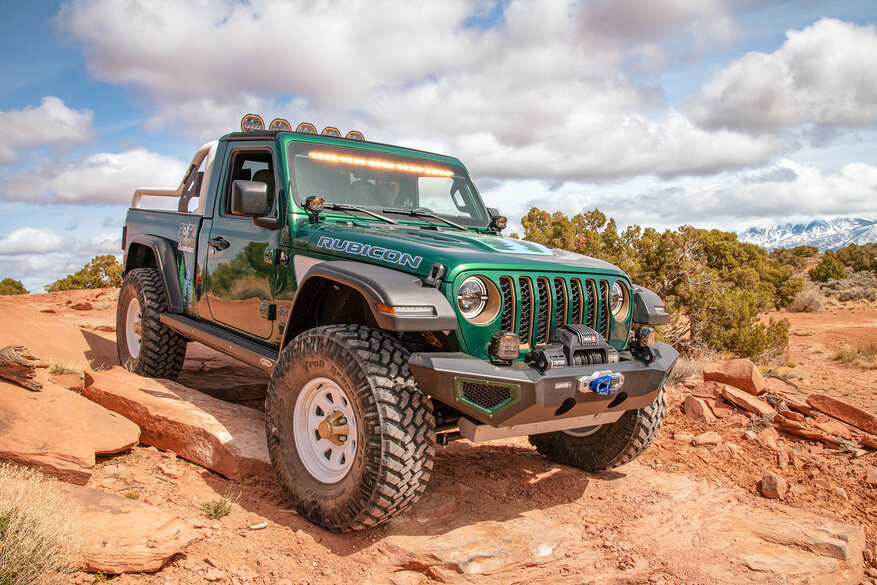by Matt Konkle
Torque Managing Editor
The amount of eye-catching Jeep wheels on the market these days is staggering. All kinds of designs. Tons of different colors.
And as you are shopping for that next great set for your Jeep, one important selling feature you’ve probably heard or read about is whether the wheel is ‘hub-centric' or 'lug-centric'. That may not mean much to you, but in reality, it could affect how your Jeep performs — especially if you want to take the vehicle off-road.
So what’s the difference? After all, the wheels you like do have the correct lug pattern and that seems to be the most important thing, right?
Well, sure, things like bolt pattern, offset and backspacing are certainly major factors when contemplating a wheel purchase. But whether these new wheels are hub- or lug-centric will determine just how they fit on the vehicle, as well as where the vehicle's weight sits.
Basically, hub centric means the space inside the wheel’s center bore is designed to fit perfectly on the axle. This way, the wheel is centered by the hub connection and the lugs can hold it flush against the mounting plate. In a hub-centric design, this connection will bear the weight of the Jeep. Most OEM wheels, as well as some aftermarket versions like Rugged Ridge, TACTIK, Lynx and Quadratec, will be hub centric and many believe these provide the best ride quality.
Lug centric is where the wheel is attached and centered by the lug nuts – instead of the hub. Some aftermarket wheels fall into this category as manufacturers make these with larger hub diameters to fit a wide range of vehicles. So, when installed, there usually is a space between the axle and hub instead of flush contact.
As far as what is better, some report no difference in drive quality between hub- and lug-centric wheels, especially when using acorn-style lugs to center. But many others say lug-centric rims do not perform as well as hub-centric versions depending on the driving conditions. This is because driving – especially off-road driving - on lug-centric wheels can mean some impacts will apply shear force to the lug studs, sometimes more than they are designed to handle. This can potentially cause the lug studs to bend, leading to vibration as the wheel slips around on the mounting plate — possibly damaging the wheel's center bore if it has enough play to contact the axle.
One good way to correct this, should you choose lug-centric wheels and have an issue, is to purchase hub-centric wheel spacers. These spacers fit inside the wheel hub and then fit over the axle, turning a lug-centric fitment into a hub-centric one.
All things being equal, choosing a hub-centric wheel will usually provide lasting performance in a variety of driving conditions. But if you really prefer a style or look that is only lug-centric, then definitely look into adding spacers for to give you the best possible fitment.
Related Articles:
Five Things To Do Today In Your Jeep





















